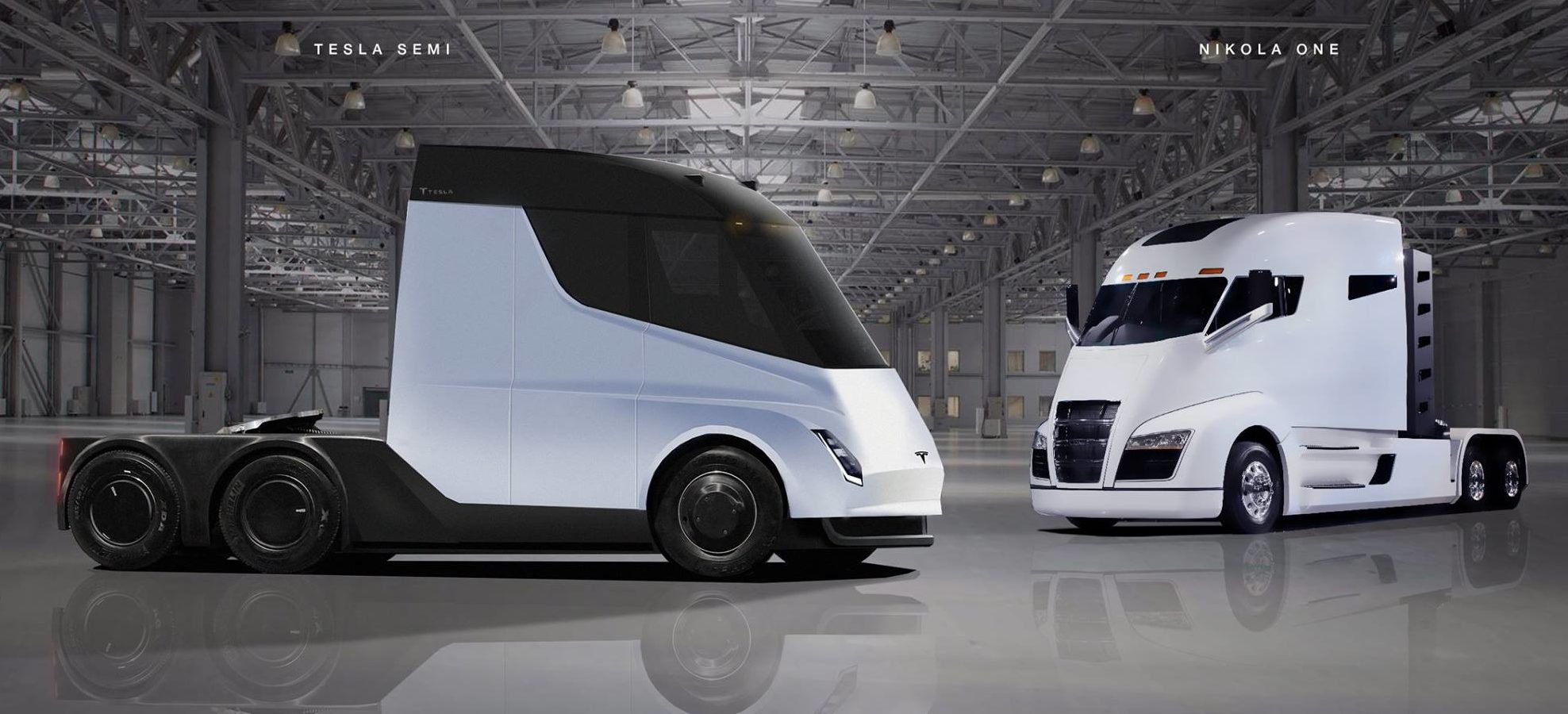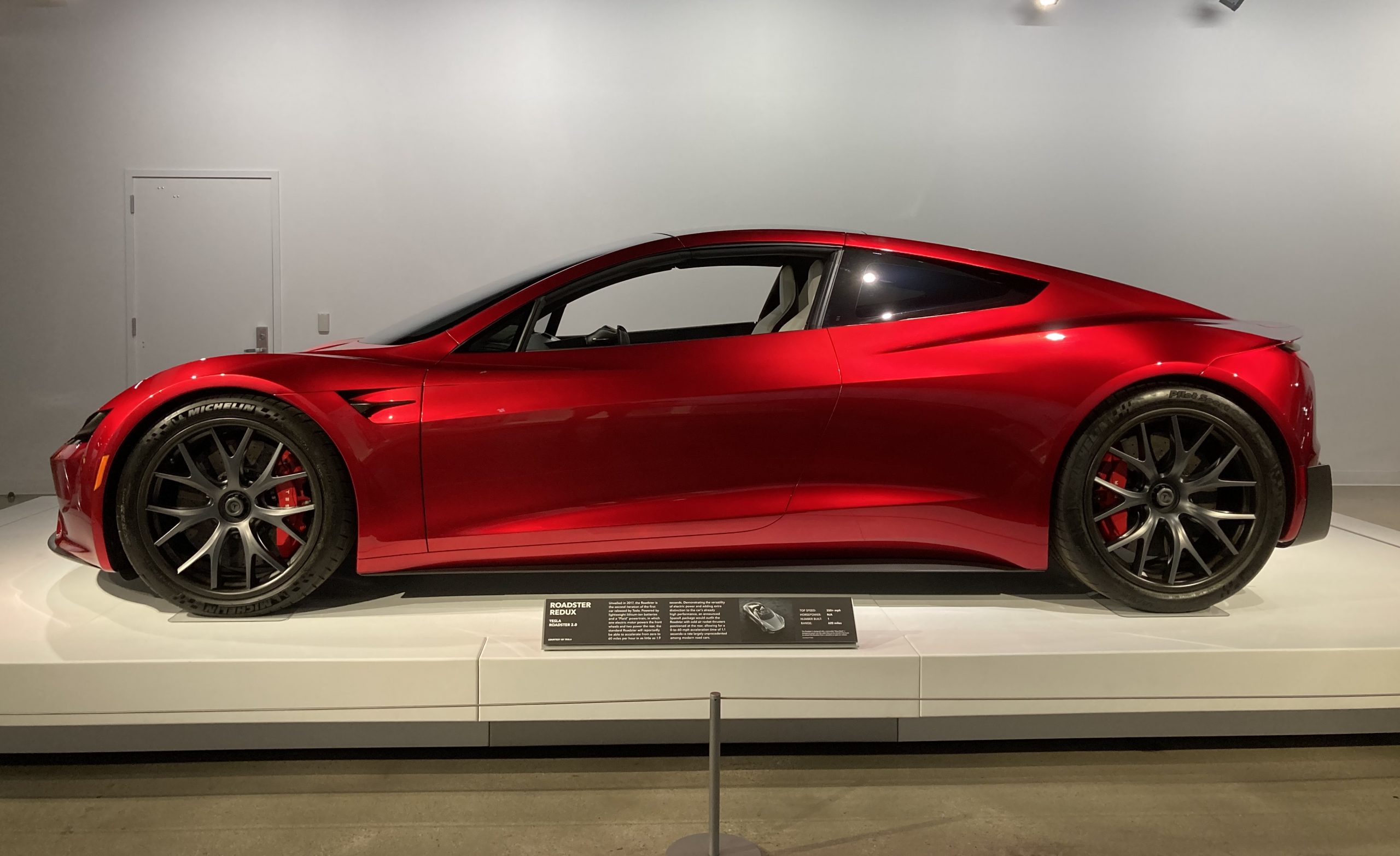

News
Tesla Semi rival Nikola targets $1B financing round amid $380M worth of new truck orders
As the company prepares to unveil working prototypes of its hydrogen-electric trucks next year, trucking startup Nikola Motor has announced that it recently completed an “oversubscribed” Series C funding round, which began last August. In a statement on Twitter, the company noted that it had received an additional $105 million from investors, bringing the total Series C funding round financing to over $205 million.
Nikola CEO and founder Trevor Milton noted in a statement to trucking publication Freightwaves that the company’s initial goal for its Series C funding round was $150 million. Inasmuch as its recent financing round was successful, though, Milton stated that the startup’s target next year would be even bigger — a $1 billion round that would likely start in the first quarter of 2019.
“It’s primarily for prepping the truck for full production. We’re going to start a $1B round in the first quarter of next year. It usually takes around 4-5 months to complete a round that big and that will go to the factory and everything else,” Milton said.
@nikolamotor has oversubscribed its C round financing at $1.1BB pre money valuation. This week we closed and received an additional $105MM bringing the total C round financing to over $205MM.
— Nikola Corporation (@nikolamotor) November 14, 2018
Nikola expects to break ground for its Arizona-based factory sometime next year. Milton notes that the facility would be tasked with manufacturing the company’s Nikola One sleeper and Nikola Two daycab once the vehicles are ready to enter production. Over the next six years, the trucking startup expects to spend about $6 billion to develop the facility. The $1 billion funding round for 2019 is expected to allow the company to deploy working units of its vehicles on US roads.
“The year 2019 is going to be a pretty amazing year because you are going to see all the products out on the road. The biggest criticism is when are you going to have trucks on the road? We’re really trying to help the industry, and you can’t do that if the truck can’t pull a load,” Milton said.
With its Series C funding completed, Nikola is now dedicating its efforts to its upcoming Nikola World 2019 exhibition, which is set to unveil a working prototype of the Nikola Two. A sample unit of the Nikola Tre, a new truck the company announced for the European and Australian markets, would also be available in the event.

While Nikola’s vehicles boast excellent specs, the company would have to establish a network of hydrogen refueling stations across the United States and Europe for its trucks to become a viable alternative to diesel-powered trucks. That said, the company has stated that it would have hydrogen coverage in the US, Canada, Europe, and Australia by 2028. Within that timeframe, Nikola has announced that it would become America’s “largest energy consumer.”
For now, though, Nikola Motor remains optimistic, announcing that the Tre, its truck for the European and Australian market, has received $380 million worth of orders within the first five days since it was announced. The company also plans to start building its hydrogen network in 2020.
The United States’ trucking industry is ripe for disruption. Thus, vehicles form upstart companies such as Nikola and trucks from established electric car makers such as Tesla would likely accelerate the transition of the long-haul industry into the zero-emissions era. Considering the progress of the companies so far, though, the Tesla Semi, which is currently undergoing testing and expected to “earnestly” begin production sometime in 2020, would likely be saturating the market by the time Nikola’s hydrogen-electric trucks start rolling off the production line.

Elon Musk
Elon Musk just said some crazy stuff about the Tesla Roadster

Elon Musk appeared on the Moonshots podcast with Peter Diamandis today to discuss AGI, U.S. vs. China, Tesla, and some other interesting topics, but there was some discussion about the upcoming unveiling of the Roadster, the company’s electric supercar that will arrive several years after it was initially slated for release.
Musk made some pretty amazing claims about the Roadster; we already know it is supposed to be lightning-fast and could even hover, if Tesla gets everything to happen the way it wants to. However, the car has some pretty crazy capabilities, some of which have not even been revealed.
On the podcast, Musk said:
“This is not a…safety is not the main goal. If you buy a Ferrari, safety is not the number one goal. I say, if safety is your number one goal, do not buy the Roadster…We’ll aspire not to kill anyone in this car. It’ll be the best of the last of the human-driven cars. The best of the last.”
🚨 Elon on the Roadster unveiling, scheduled for April 1:
— TESLARATI (@Teslarati) January 6, 2026
Musk makes a good point: people who buy expensive sports cars with ridiculous top speeds and acceleration rates do not buy them to be safe. They hope they are safe in case of an emergency or crash, but safety is not at the forefront of their thoughts, because nobody buys a car thinking they’ll crash it.
The Roadster is truly going to push the limits and capabilities of passenger vehicles; there’s no doubt about that. Tesla plans to show off the new version car for the first time on April 1, and Musk has only hinted at what is possible with it.
Musk said back in November:
“Whether it’s good or bad, it will be unforgettable. My friend Peter Thiel once reflected that the future was supposed to have flying cars, but we don’t have flying cars. I think if Peter wants a flying car, he should be able to buy one…I think it has a shot at being the most memorable product unveiling ever. [It will be unveiled] hopefully before the end of the year. You know, we need to make sure that it works. This is some crazy technology in this car. Let’s just put it this way: if you took all the James Bond cars and combined them, it’s crazier than that.”
Production is set to begin between 12 and 18 months after the unveiling, which would put the car out sometime in 2027. Hopefully, Tesla is able to stay on track with the scheduling of the Roadster; many people have been waiting a long time for it.
News
Tesla launches hiring for Robotaxi program in its twentieth country
Overall, the hiring signals Tesla’s aggressive timeline for global dominance in autonomous mobility.

Tesla has launched a hiring initiative for its Robotaxi program in its twentieth country, as the company posted two new jobs in Thailand this week.
Tesla is hiring in Bangkok and Kowloon for the Vehicle Operator position, which is related to data collection, and is the first in Thailand, but the twentieth country overall, as the company tries to expand into other markets.
🚨 BREAKING: Tesla is hiring additional full-time Vehicle Operators in Bangkok, Thailand.
Previous openings were 6-month, part-time roles. These are equivalent to AI Safety Operator roles in the U.S. pic.twitter.com/R6LzoU1bos— Tesla Yoda (@teslayoda) January 5, 2026
Tesla has had active job postings for Vehicle Operator positions in the United States, India, Israel, Taiwan, Germany, the Czech Republic, Hungary, the UK, Finland, Switzerland, Sweden, the Netherlands, Austria, Spain, Norway, Italy, and Turkey in past listings.
These postings are not all currently available, likely because the roles have been filled.
Thailand is the most recent, and broadens the company’s potential path to expanding its ride-hailing program, which is only active in the United States in Austin, Texas, and the California Bay Area, so far.
These roles typically involve data collection, which assists in improving Autopilot and Full Self-Driving operation. Tesla’s self-driving programs utilize real-world data that is accumulated and stored, observing vehicle and traffic behavior, as well as tendencies that are performed by human drivers to help increase safety and overall performance.
Overall, the hiring signals Tesla’s aggressive timeline for global dominance in autonomous mobility. Although the company has several high-profile rivals and competitors in the field, it has established itself as a main player and a leader in the development of autonomous technology, especially in the U.S., as its FSD suite is refined on almost a weekly basis.
The Full Self-Driving suite is available in seven countries and territories currently, including the U.S., Canada, China, Mexico, Puerto Rico, Australia, and New Zealand. Its biggest goal for expansion is currently the European market, where regulatory hurdles have been the main bottleneck prolonging its launch on the continent.
Tesla has performed months of testing in various European countries, including France and Spain, and does have support in some areas from various regulatory agencies. However, the company is hoping to get through this red tape and offer its suite in Europe for the first time, hopefully this year.
News
Tesla China rolls out Model Y upgrades, launches low-interest financing
These strategies are aimed at improving the ownership experience and keeping vehicle pricing competitive in the world’s largest electric vehicle market.

Tesla has rolled out minor updates to the five-seat Model Y in China, upgrading the vehicle’s center display to a higher-resolution 16-inch 2K screen. The electric vehicle maker also introduced attractive financing options, including 7-year low-interest rates, to offset the new purchase tax on EVs.
These strategies are aimed at improving the ownership experience and keeping vehicle pricing competitive in the world’s largest electric vehicle market.
Five-seat Model Y gets larger, better display
With its recent update, all three variants of the five-seat Model Y now feature an upgraded 16-inch 2K resolution center display, which replaces the vehicle’s previous 15.4-inch 1080p panel. This screen was already used in the six-seat Model Y L, and it offered improved visual clarity. Tesla China has also updated the Model Y’s headliner to black, giving the vehicle a sleeker appearance.
Prices of the five-seat Model Y remain unchanged at RMB 263,500, RMB 288,500, and RMB 313,500 for the respective trims. This update enhances the cabin experience as domestic rivals are already adopting high-resolution screens. As noted in a CNEV Post report, some domestic automakers have begun rolling out vehicles equipped with 3K-resolution displays.
New financing offers
Tesla also launched ultra-long-term financing offers for its locally produced models in China, which include the Model 3 sedan, the five-seat Model Y, and the six-seat Model Y L, through January 31, 2026. The 7-year option features an annualized fee rate as low as 0.5%, which is equivalent to 0.98% interest. This is expected to save customers up to RMB 33,479 ($4,790) compared to standard rates.
A 5-year zero-interest plan is also available, and it has been extended to the Tesla Model Y L for the first time. These incentives help offset China’s new 5% purchase tax on New Energy Vehicles (NEVs) in 2026-2027. Some of Tesla’s rivals in China have announced in recent months that they would be covering the purchase tax owed by buyers early this year.








